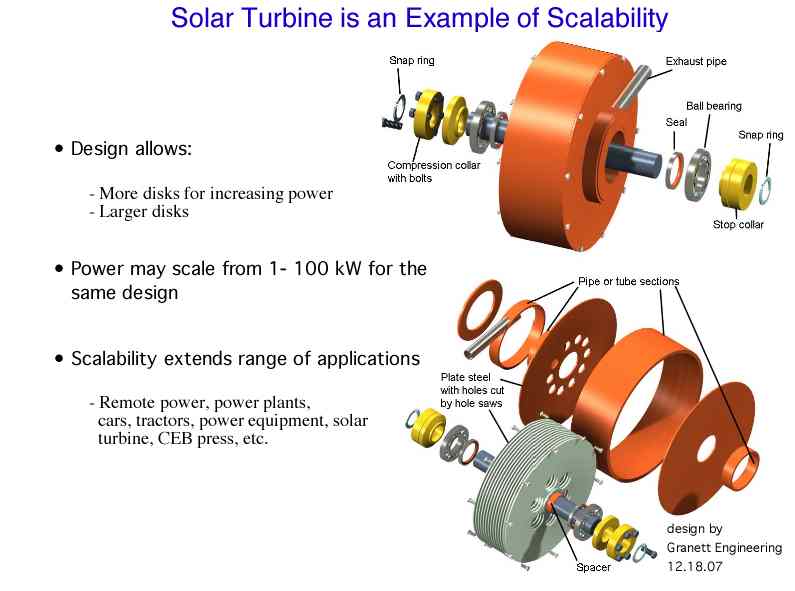Slide 19
This page was tagged as a candidate for deletion. If this page does not meet our criteria for deletion, please remove this notice.
(Explanation: contents moved to Slide 1)
Slide 1 - Slide 2 - Slide 3 - Slide 4 - Slide 5 - Slide 6 - Slide 7 - Slide 8 - Slide 9 - Slide 10 - Slide 11 - Slide 12 - Slide 13 - Slide 14 - Slide 15 - Slide 16 - Slide 17 - Slide 18 - Slide 19 - Slide 20 - Slide 21 - Slide 22 - Slide 23 - Slide 24 - Slide 25 - Slide 26 - Slide 27 - Slide 28 - Slide 29 - Slide 30 - Slide 31 - Slide 32 - Slide 33
The boundary layer turbine – the general motor that we propose in the solar turbine or electric vehicles – is en example of good scalability. The entire device is designed for disassembly, and more disks could be added. Larger disks may be added as well. The working gas shoots tangentially into the device. More and larger disks mean more power output – from 1-100 kW. That is a large range, and lends itself to powering tools, cars, tractors, and power plants – all based on the same design of the turbine.
I don’t have a good example of simplicity of design outside of the CEB press, whose hallmark is its simplicity. I will talk about the CEB press now – our first working prototype of the GVCS toolset. This example shows the open source production method and its economics in practice. We built the prototype in November, and are now moving into the production stage.
